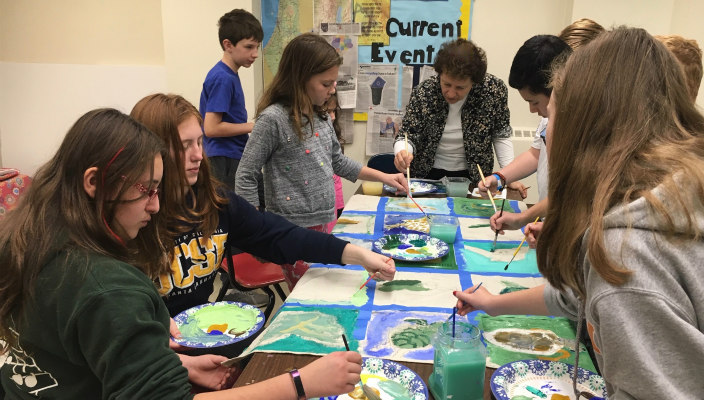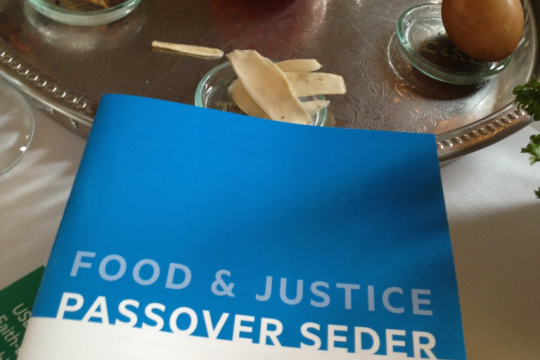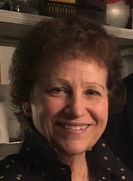
After my teacher-daughter took a sea turtle rescue and conservation tour with marine biologists and other teachers last summer in Hawaii, she came home with one takeaway: “Mom, the plastic straws have got to go!”
For seven days, she and the others participated in sea turtle research and rescue projects, helping local biologists better understand the population distribution of these animals. They removed plastic junk covering vast stretches of beautiful beaches and rescued sea turtles injured by fishing line or other objects.
Fast forward to the High Holidays at the Garden City Jewish Center in Garden City, NY.
During Rosh HaShanah children’s services, I told my religious school students about my daughter’s experiences in Hawaii and showed them some of the photos she had taken during her trip. Explaining that my resolution for the year included focusing on real things we can do to repair our damaged world, I challenged them to work together as a group to address pollution from plastic items. Abiding by the philosophy that every little bit helps, we colored a huge tikkun olam (repair of the world) poster and came up with inspirational ideas – including some to fix the pollution problems in our oceans.
Fast forward once again to the Sunday morning after the Tree of Life murders in Pittsburgh.
Even as officers from Nassau County Police Department’s Special Operations Force patrolled outside our synagogue, most students attended religious school and we got busy with our sea turtle rescue project. Using photos of different sea turtle species from around the world, students were completely engaged in choosing and blending ocean colors from their acrylic paint palettes to paint sea turtles on canvas squares marked on a large drop cloth – hardly concerned that their work didn’t look totally realistic. On that particular day, it was especially important – indeed, it was a mitzvah (a commandment) – to ensure the focus of our learning was positive, fun, relaxing, and selfless.
It took two full sessions for our students from ages six through 13 to cover all the squares with paint, all the while having a good time as they turned our poster-collage-painting into a terrific work of art. As they worked, I told them how important it is to be ambassadors for the sea turtles, suggesting that they could refuse (politely) to use plastic straws in restaurants and recommend that restaurants stop using them altogether.
As a Reform Jew (by choice) and a volunteer educator for 30 years, it is my job, especially during these divisive, stressful times for children (and adults), to instill in my students an understanding of tikkun olam and the many ways each of us can effect positive change in this world.
Related Posts

Passover 2024: The Three Central Messages of Pesach

Modern-Day Plagues of Injustice and Inequality

